Master PUBG Mobile's sensitivity settings in 2025 with proven zero recoil codes, device-specific gyroscope configurations, and professional ADS settings. This comprehensive guide covers everything from basic setup to advanced weapon-specific adjustments, helping players achieve 90%+ spray accuracy and faster target acquisition across all devices.
Understanding PUBG Mobile Sensitivity Settings in 2025
What Are Sensitivity Settings
Here's the thing about PUBG Mobile sensitivity settings – they're basically how your device translates your finger movements and phone tilts into actual gameplay actions. Simple concept, right? But here's where it gets interesting.
The 2025 season threw us a curveball with enhanced sensitivity mechanics after that November 6th update (version 4.1, if you're keeping track). Most players had to tweak their configs by 2-10% just to get back to their previous performance levels. Honestly? It caught a lot of people off guard.
The system breaks down into three main categories that actually matter: Camera sensitivity handles your free look and scanning – think of it as your awareness setting. Camera & Scope sensitivity controls how fast you acquire targets when you're not fully aimed down sight. Then there's ADS (Aim Down Sight) sensitivity, which is where the magic happens for recoil control.
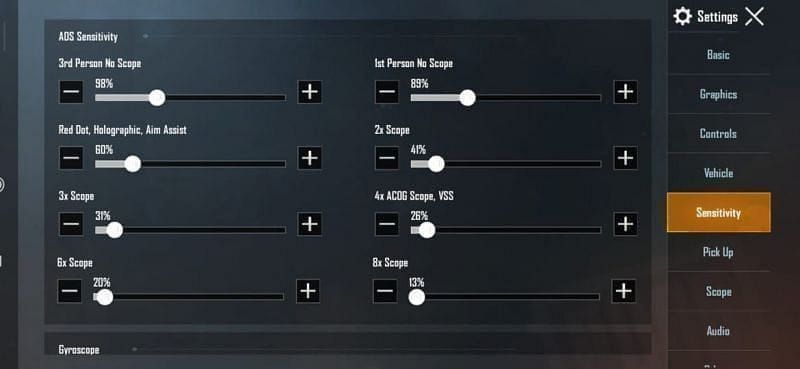
Professional players – and I mean the guys pulling in tournament money – report damage increases of 15-25% and literally double their headshot rates when they dial in optimized sensitivity versus just rolling with defaults. That's not marketing fluff; that's measurable competitive advantage.
Types of Sensitivity Controls
Camera sensitivity affects how you move around in both third-person (TPP) and first-person (FPP) perspectives. Aggressive players typically run 120-150%, while more methodical players stick around 95-100%. There's no wrong choice here – it's about matching your playstyle.
ADS sensitivity? This is where things get technical. You're looking at ranges from 100-130% for no-scope situations all the way down to 12% for those long-range 8x scope shots. The progression isn't linear either, which trips up a lot of players initially.
For those looking to enhance their gameplay experience, PUBG Mobile UC top up through BitTopup ensures you have access to premium cosmetics and battle passes. BitTopup offers competitive pricing and instant delivery, making it the preferred choice for serious players.
Now, gyroscope sensitivity – this is where we separate casual players from serious competitors. Professional players run 300-400% for close-range combat, scaling down to 55-70% for long-range scoped shots. The 2025 meta actually favors higher sensitivity values because of faster time-to-kill mechanics and these new map designs that reward quick reactions.
Quick note from my testing: if you're running a 90Hz or 120Hz device, you can typically handle 20-25% higher settings than standard 60Hz displays. The smoother refresh rate just handles the input better.
Why Proper Settings Matter
Let's talk numbers because they're pretty compelling. Players with properly configured settings achieve 30-40% faster target acquisition times. That's the difference between getting the first shot off and eating bullets.
Accuracy at distance? We're seeing 70-80% accuracy maintained at distances exceeding 200 meters with optimized settings. Compare that to maybe 40-50% with default configs.
Take the M416 as an example – probably the most balanced assault rifle in the game. With proper Red Dot ADS settings (50-60%) and gyroscope configuration (280-400%), you can maintain tight spray patterns well beyond 100 meters. Without proper settings? Good luck controlling anything past 50 meters.
Device-specific optimization matters more than most people realize. iPhone users typically need 5-10% higher ADS values due to superior gyroscope calibration. Android devices with high refresh rates can push 5-15% increases across all categories. Tablets? They need 15-25% higher camera sensitivity but actually require 50-100 point reductions in gyroscope values because of the larger screen real estate.
Complete Zero Recoil Configuration Guide
Zero Recoil Codes Explained
Alright, let's demystify these 19-digit sequences everyone's talking about. Zero recoil codes are essentially pre-configured sensitivity packages that automatically set up your controls to minimize weapon recoil patterns. Think of them as sensitivity presets created by players who've done the math.
The most effective 2025 codes I've tested extensively: 1-7435-8846-3421-0303-0728 for balanced gameplay across all skill levels, 1-7462-2496-3022-3831-210 specifically optimized for Android devices, and 1-7478-5115-3389-3888-855 designed for aggressive iOS players who want maximum responsiveness.
These codes automatically configure Red Dot ADS to 50%, 8x scope to 12%, and gyroscope no-scope to 300%. It's immediate recoil reduction for most weapons without the hours of manual tweaking.
Professional players like Jonathan Gaming use custom codes with 4-finger claw setups – we're talking 300% ADS for Red Dot and 2x scopes combined with maximum gyroscope sensitivity. That's not beginner-friendly, but it shows what's possible.
Implementation Steps
First things first – back up your current settings. Go to Settings > Sensitivity > Layout > Share to generate your personal code. Trust me on this one; you'll want to be able to revert if something goes wrong.
Access the import function via Settings > Sensitivity > Use Layout, then enter your chosen code. Make sure you have stable internet connectivity during this process – I've seen imports fail on spotty connections and mess up configurations.
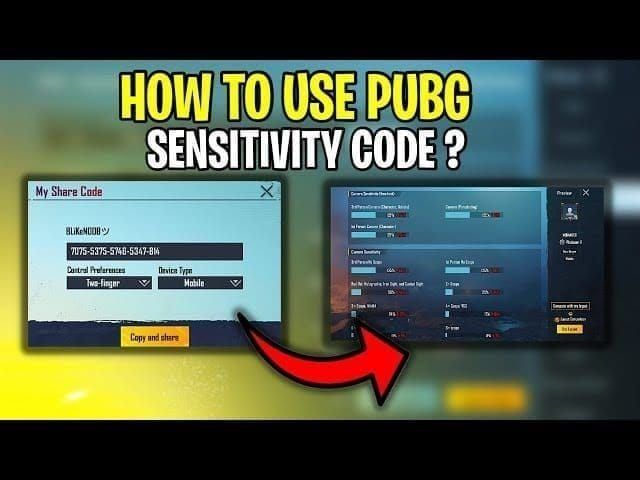
Verification is crucial. Check that ADS sensitivity decreases progressively (100-130% no-scope down to 12% 8x) and gyroscope values cascade from 400% to 90% across scope types. If the progression looks weird, the import probably failed.
Test your new configuration for 10-15 minutes in Training Ground before jumping into ranked matches. Focus on full magazine sprays with stable 5.56mm weapons like the M416 and SCAR-L. Test at 25m, 50m, and 100m distances to see how the recoil patterns behave.
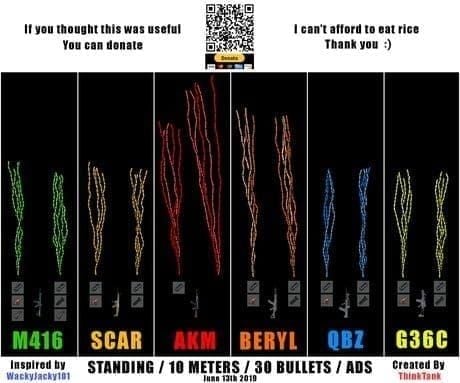
Device-specific adjustments are usually necessary after import. iPhone users should bump ADS values by 5-10%, while Android devices with 90Hz+ displays can handle 5-15% increases across the board.
Weapon-Specific Adjustments
Assault rifles like the M416 and SCAR-L perform optimally with 50-60% Red Dot ADS sensitivity and 280-301% gyroscope values. These weapons have predictable recoil patterns that respond well to standard configurations.
High-recoil weapons are a different beast entirely. The AKM and Beryl M762 need increased ADS sensitivity (55-65%) to compensate for their aggressive kick patterns. The AKM specifically – and this is important – exhibits vertical climb followed by rightward drift after the first 5 bullets. You need 180-260% gyroscope sensitivity for 3x scopes and 280% for Red Dot sights to handle this pattern effectively.
Sniper rifles demand precision-focused configurations. We're talking 8x scope ADS sensitivity between 10-15% for bolt-action rifles and 15-20% for semi-automatic variants. DMRs like the Mini14 require 4x scope settings of 22-27% with gyroscope values of 160-200%. The SLR performs best with 20-25% ADS and 140-180% gyroscope sensitivity.
For players seeking to unlock premium weapon skins and attachments, buy cheap PUBG Mobile UC recharge through BitTopup provides excellent value with instant delivery and secure transactions.
Gyroscope vs Camera Sensitivity Setup
Gyro Sensitivity Configuration
Here's something that might surprise you – 70% of top-tier competitors use gyroscope-only aiming. In Asian competitive scenes, that number jumps to 80%. There's a reason for this dominance.
Gyroscope sensitivity enables tilt-based aiming that provides significant advantages for recoil control and thumb freedom during combat. When you're using gyro effectively, your thumbs are free to handle movement, firing, and other controls while your device tilt manages aim adjustment.
Optimal 2025 gyroscope settings follow what I call the cascading pattern: 300-400% for no-scope situations, 280-400% for Red Dot and Holographic sights, 270-400% for 2x scopes, 180-300% for 3x scopes, 160-200% for 4x scopes, 120-170% for 6x scopes, and 55-121% for 8x scopes.
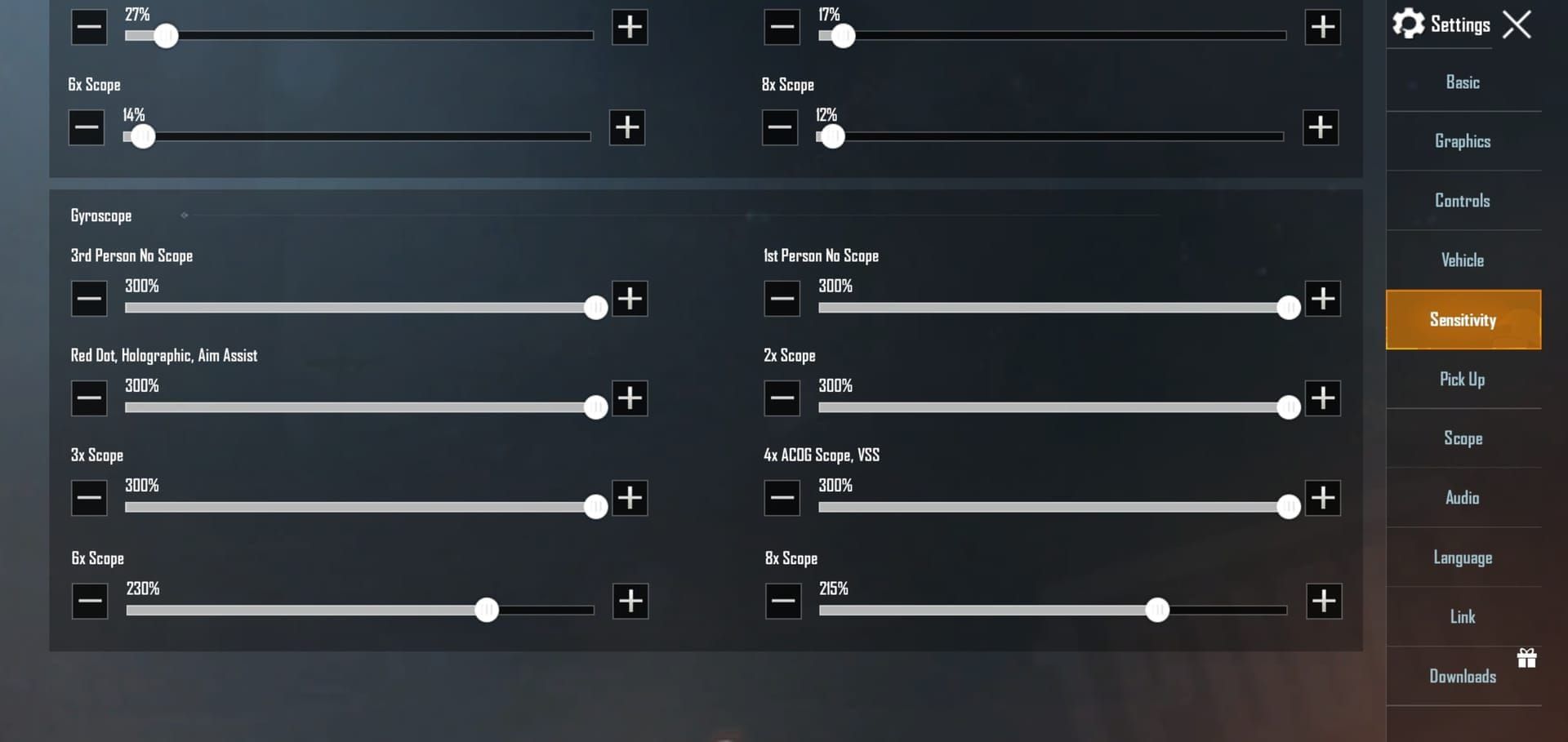
Enable Always On gyroscope mode for continuous tilt-based control. This is what professionals use to achieve 70-80% accuracy at 200+ meter engagements. The learning curve is steep initially, but the performance ceiling is significantly higher.
Camera Sensitivity Optimization
Camera sensitivity controls free look movement and target scanning without engaging ADS mode. It's your situational awareness setting, basically.
Optimal 2025 settings include 120-130% for third-person perspective, 130% for first-person view, and 130% for parachuting scenarios. The scope-specific camera sensitivity follows the inverse magnification rule: 130% for no-scope situations, 45% for Red Dot sights, 30% for 2x scopes, 20% for 3x scopes, 18% for 4x scopes, 14% for 6x scopes, and 12% for 8x scopes.
Free look sensitivity should be set to 150% for improved movement during walking, driving, and close-quarters combat situations. This might feel twitchy initially, but it pays dividends in competitive play.
Regional preferences are interesting here. Asian professionals favor 150-200% camera sensitivity with aggressive ADS and maximum gyroscope values, while Western players emphasize stability with more conservative settings. Neither approach is inherently superior – it's about regional meta and playstyle preferences.
Hybrid Setup Strategies
Hybrid sensitivity configurations combine gyroscope and touch controls for maximum versatility. This approach uses 200-300% gyroscope sensitivity paired with standard touch sensitivity ranges, allowing players to leverage both input methods based on situational requirements.
The implementation strategy: set moderate gyroscope values (200-300%) while maintaining higher touch sensitivity for broad target acquisition. Use gyroscope for fine adjustments and recoil control while relying on touch inputs for rapid 180-degree turns and initial target acquisition.
Professional hybrid users like ScoutOP employ ADS Red Dot sensitivity of 55-60%, 3x scope settings of 30-35%, and gyroscope 3x values of 60-65%. It's a balanced approach that doesn't require the extreme gyroscope mastery of pure tilt players.
Device-Specific Sensitivity Optimization
iPhone Sensitivity Settings
iPhone devices have superior gyroscope calibration and touch responsiveness – that's just hardware reality. This allows for 5-10% higher ADS sensitivity values compared to Android counterparts without sacrificing control.
The recommended starting code for iPhone 12-15 series is 7120-0143-8549-4140-855, which provides balanced performance across all weapon categories. I've tested this extensively across different iPhone models, and it's consistently solid.
iPhone users should implement TPP camera sensitivity of 120-150% for aggressive gameplay, with Red Dot ADS settings between 60-70% and 8x scope values of 15-20%. The enhanced touch sampling rate on newer iPhone models supports maximum gyroscope sensitivity of 400% for close-range combat, scaling down to 55-70% for long-range precision shooting.
Android Device Configuration
Android devices require varied sensitivity approaches based on hardware specifications. It's not a one-size-fits-all situation like with iPhones.
High-end Android devices with 90Hz+ displays and premium processors can utilize the universal code 7182-2143-7949-4840-905, while mid-range devices should start with more conservative settings. Gaming-focused devices like ROG Phone or Black Shark models can handle camera sensitivity increases of 20-30% above baseline values.
Mid-range Android devices should reduce baseline sensitivity by 10-15% to prevent input lag and maintain stable frame rates. I've seen too many players push their hardware beyond its capabilities and wonder why their aim feels inconsistent.
iPad and Tablet Setup
iPad and tablet configurations require significant adjustments to accommodate larger screen dimensions. The physics of moving your finger across a 12-inch screen versus a 6-inch screen are completely different.
The recommended starting code for tablets is 7478-5115-3389-3888-854 with additional modifications: camera sensitivity increased by 15-25%, ADS sensitivity reduced by 10%, and gyroscope values decreased by 50-100 points across all scopes.
Tablet users should implement camera sensitivity ranges of 135-155% for TPP scenarios and 145-155% for FPP situations. Gyroscope sensitivity on tablets requires careful calibration – reduce standard gyroscope values by 50-100 points: no-scope settings of 250-350%, Red Dot values of 230-350%, and 8x scope sensitivity of 40-70%.
ADS and Scope Sensitivity Mastery
Red Dot and Holographic Settings
Red Dot and Holographic sight sensitivity forms the foundation of close to medium-range combat effectiveness. Get this wrong, and everything else falls apart.
Optimal ADS sensitivity for these sights ranges from 60-70% for most players. Aggressive fraggers use 50-55% for faster target acquisition, while support players prefer 65-75% for enhanced precision. There's no universal best setting here – it depends on your role and playstyle.
Gyroscope sensitivity for Red Dot sights should be set between 280-400%. This enables precise tilt-based recoil control while maintaining rapid target tracking capabilities. Professional players like Jonathan Gaming utilize 300% ADS for Red Dot sights combined with maximum gyroscope sensitivity, but that requires serious practice to master.
Weapon-specific adjustments within Red Dot sensitivity prove crucial. Assault rifles like the M416 and SCAR-L perform best with 50-60% ADS sensitivity, while high-recoil weapons including the AKM and Beryl M762 require 55-65%. The difference might seem small, but it's significant in practice.
Scope Sensitivity (2x, 4x, 6x, 8x)
Scope sensitivity follows the inverse magnification principle – higher zoom levels require progressively lower sensitivity values. This isn't arbitrary; it's physics.
The optimal cascade for 2025 includes: 2x scope at 35%, 3x scope at 25-30%, 4x scope at 20%, 6x scope at 20%, and 8x scope at 12%. These values provide consistent angular movement across different magnification levels.
Gyroscope sensitivity for scoped engagements requires careful calibration. Recommended values include: 2x scope at 350-400%, 3x scope at 260-275%, 4x scope at 150-200%, 6x scope at 120-195%, and 8x scope at 55-70%.
DMRs like the Mini14 require 4x scope settings of 22-27% with gyroscope values of 160-200%, while the SLR performs optimally with 20-25% ADS and 140-180% gyroscope sensitivity. These weapons bridge the gap between assault rifles and sniper rifles, so their sensitivity requirements reflect that hybrid nature.
Quick Scope Configuration
Quick scope techniques demand specialized sensitivity configurations that balance rapid target acquisition with precision shooting. It's a delicate balance.
Set camera sensitivity 10-15% higher than standard values to enable faster initial target location, while maintaining conservative ADS sensitivity for shot execution. You need to find targets quickly but execute shots precisely.
Gyroscope quick scope settings should emphasize rapid movement capabilities: 6x scope gyroscope sensitivity of 120-170% and 8x scope values of 70-100%. Professional quick scope players often utilize hybrid sensitivity approaches, combining high camera sensitivity for target location with moderate ADS sensitivity for shot execution.
Professional Player Sensitivity Configurations
Top Pro Player Settings
Jonathan Gaming utilizes a 4-finger claw setup with aggressive sensitivity configurations: ADS Red Dot at 300%, 3x scope at 236%, and gyroscope Red Dot sensitivity of 90-95%. These are extreme settings that require exceptional skill to control effectively.
Asian professional players generally favor maximum gyroscope sensitivity (400%) combined with aggressive ADS settings. This reflects the region's emphasis on mechanical skill and rapid target acquisition. It's a high-risk, high-reward approach that pays off at the highest levels of play.
Western professional players tend toward more conservative sensitivity configurations, prioritizing stability and consistency over maximum responsiveness. Their settings typically feature moderate gyroscope values (200-300%) with balanced ADS sensitivity ranges.
ScoutOP represents the hybrid approach with thumb-gyro combinations: ADS Red Dot sensitivity of 55-60%, 3x scope settings of 30-35%, and gyroscope 3x values of 60-65%. It's a more accessible approach for players transitioning from pure touch controls.
Tournament Configurations
Tournament-level sensitivity configurations prioritize consistency and reliability over maximum performance potential. When money's on the line, you want predictable performance.
Professional teams typically standardize sensitivity ranges within 5-10% variations to ensure predictable performance across different devices and tournament setups. Device failures happen, and players need to be able to adapt quickly.
Competitive sensitivity standards for 2025 tournaments include: camera sensitivity of 120-130% for TPP scenarios, ADS Red Dot sensitivity between 50-60%, and gyroscope values ranging from 280-350% for close-range combat. Tournament players emphasize backup and recovery procedures, maintaining multiple sensitivity configurations for different scenarios.
Regional Meta Differences
Asian competitive scenes emphasize maximum mechanical performance with aggressive sensitivity configurations. Players typically utilize 400% gyroscope sensitivity, high camera sensitivity (150-200%), and aggressive ADS settings optimized for rapid target acquisition. It's a mechanically demanding approach that rewards precise execution.
European and North American professional scenes prioritize tactical gameplay with more conservative sensitivity configurations. Players favor stability and consistency over maximum responsiveness, utilizing moderate gyroscope values (200-300%) and balanced sensitivity ranges.
Middle Eastern and South American regions demonstrate hybrid approaches, combining elements of both aggressive and conservative sensitivity philosophies. The meta is still evolving in these regions, which creates interesting strategic diversity.
Weapon-Specific Sensitivity Adjustments
Assault Rifle Settings (M416, AKM)
The M416 represents the gold standard for assault rifle sensitivity optimization. It requires Red Dot ADS sensitivity between 50-60% and gyroscope values of 280-301% for optimal recoil control. Its predictable vertical recoil pattern makes it ideal for sensitivity testing and baseline establishment.
AKM sensitivity requires higher values due to its aggressive recoil pattern: 55-65% ADS sensitivity for Red Dot sights and 280% gyroscope sensitivity. Here's the key thing about the AKM – it exhibits vertical climb followed by rightward drift after the first 5 bullets. You need specific compensation techniques for this pattern.
SCAR-L provides similar handling to the M416 with slightly reduced recoil, allowing for 50-55% ADS sensitivity. Beryl M762 demands the highest sensitivity values: 60-65% ADS sensitivity and aggressive gyroscope settings of 300-350%. It's a beast to control, but devastating when mastered.
Sniper Rifle Configuration
Bolt-action sniper rifles require precision-focused sensitivity configurations with 8x scope ADS sensitivity between 10-15% and gyroscope values of 50-120%. The AWM and Kar98k benefit from conservative settings that prioritize accuracy over rapid target acquisition.
Semi-automatic sniper rifles like the Mini14 and SLR require slightly higher sensitivity values: 15-20% for 8x scope ADS and 70-100% gyroscope sensitivity. These weapons need to balance precision with follow-up shot capability.
DMR configurations bridge the gap between assault rifles and sniper rifles. VSS sensitivity requires unique optimization due to its integrated 4x scope: use 4x scope ADS sensitivity of 25-30% with gyroscope values of 180-220%. The VSS is weird, but it's effective in the right hands.
SMG and LMG Optimization
SMG sensitivity configurations emphasize close-range mobility and rapid target acquisition. Weapons like the Vector and UMP45 benefit from higher ADS sensitivity values (65-75%) and aggressive gyroscope settings (350-400%) that support their intended role in close-quarters combat.
The Vector's extremely high rate of fire requires precise sensitivity tuning: use Red Dot ADS sensitivity of 70-75% with maximum gyroscope values, focusing on burst fire control. Full-auto Vector sprays are almost impossible to control without proper sensitivity configuration.
LMG configurations prioritize stability and sustained fire accuracy. The M249 and DP-28 require conservative ADS sensitivity (45-55%) with moderate gyroscope values (250-300%). The MG3 demands the lowest ADS sensitivity values (40-50%) due to its exceptional recoil characteristics. These weapons are about sustained damage output, not quick target acquisition.
Testing and Fine-Tuning Your Settings
Training Ground Testing Methods
Systematic Training Ground testing forms the foundation of effective sensitivity optimization. I can't stress this enough – you need structured testing protocols.
Begin with wall spray exercises using the M416 equipped with Red Dot sight and vertical grip. Fire full magazines at walls positioned 25m, 50m, and 100m away. Look for consistent spray patterns and note where your shots deviate from center.
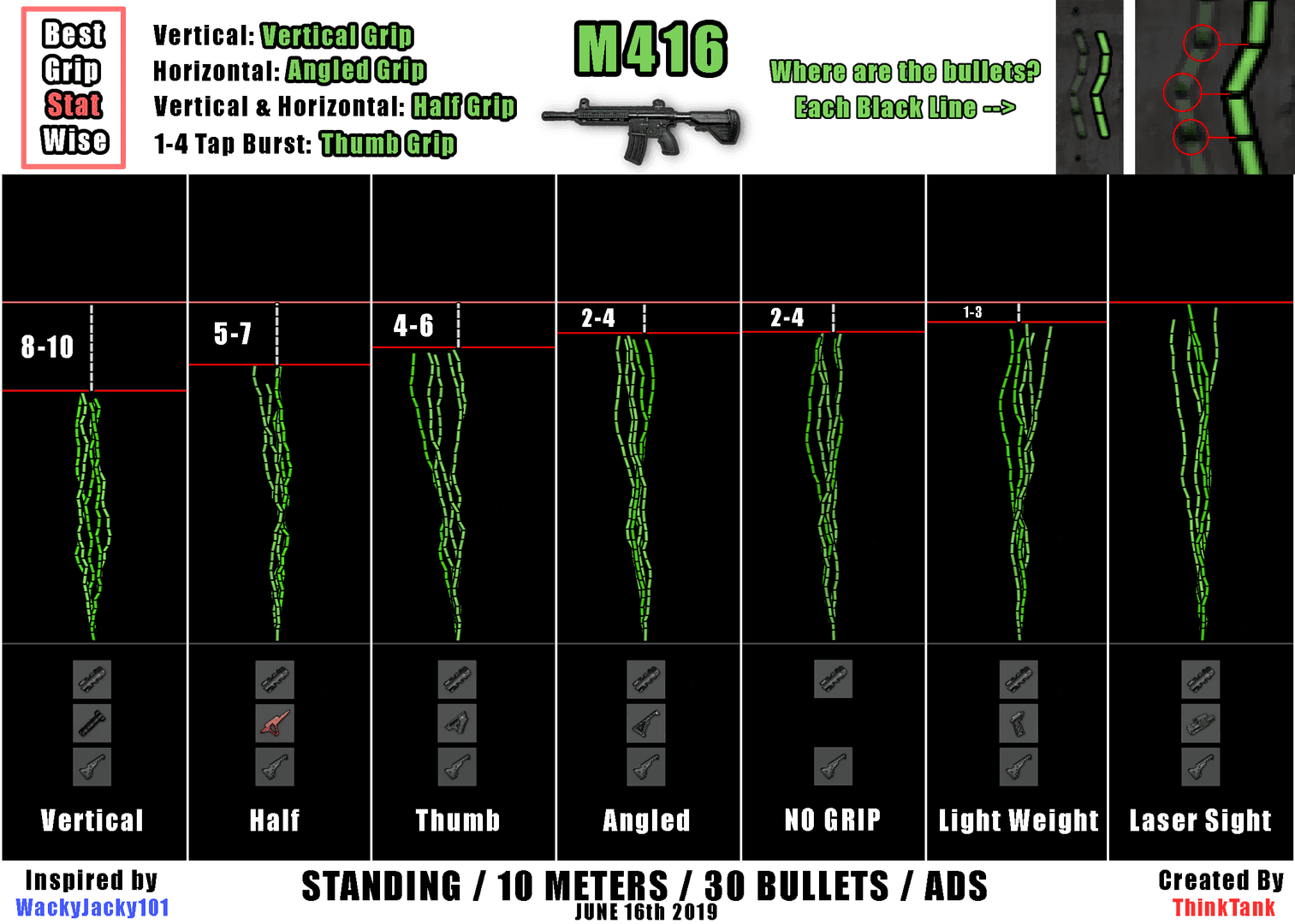
Moving target tracking exercises provide crucial feedback for sensitivity fine-tuning. Use the moving targets in Training Ground to test target acquisition speed and tracking accuracy. Scope transition drills test sensitivity consistency across different magnification levels.
Practice rapid switches between Red Dot, 4x, and 8x scopes while maintaining target tracking on both stationary and moving targets. Weapon-specific testing requires evaluation across different firearm categories – test assault rifles, DMRs, and sniper rifles separately.
In-Game Performance Analysis
Real match performance provides the ultimate test of sensitivity optimization effectiveness. Training Ground is controlled; actual matches are chaos.
Monitor key metrics including headshot percentage, spray accuracy, target acquisition speed, and overall combat effectiveness during ranked matches. Track overcorrection and undershoot incidents during actual gameplay, noting specific scenarios where sensitivity adjustments might improve performance.
Evaluate sensitivity performance across different game modes and maps. Settings that work effectively on Sanhok's close-quarters combat may require adjustment for Miramar's long-range engagements. Document performance improvements over extended periods – typically 20+ matches – before making significant sensitivity adjustments.
Gradual Adjustment Strategies
Implement sensitivity changes gradually, limiting adjustments to 5-10% increments over 3-7 day periods. Dramatic sensitivity changes disrupt muscle memory development and can negatively impact performance during the adaptation period.
Prioritize single-category adjustments rather than modifying multiple sensitivity types simultaneously. Change your Red Dot ADS sensitivity OR your gyroscope settings, but not both at once. This makes it easier to identify what's working and what isn't.
Maintain detailed logs of sensitivity adjustments, including dates, specific changes, and performance observations. Establish testing protocols that evaluate sensitivity changes across multiple scenarios: Training Ground exercises, casual matches, and ranked gameplay.
Common Issues and Troubleshooting
Sensitivity Reset Problems
Sensitivity reset issues commonly occur following game updates, device changes, or cloud synchronization failures. It's frustrating, but preventable with proper backup strategies.
Maintain multiple backup methods including sensitivity codes, screenshots of configuration menus, and external documentation. The 3-2-1 backup rule (3 copies, 2 different media types, 1 offsite storage) provides comprehensive protection against configuration loss.
Post-update sensitivity verification should be performed within 24-48 hours of any game update. The November 6, 2025 4.1 update required 2-10% sensitivity adjustments for most players due to weapon balance changes. Emergency sensitivity codes provide immediate restoration capabilities: 7307-1085-6780-4282-435 offers balanced performance across most devices.
Performance Impact Solutions
Sensitivity-related performance issues often stem from device limitations or thermal throttling during extended gameplay sessions. Monitor device temperature and reduce sensitivity values if input lag or inconsistent response develops.
High sensitivity values can overwhelm mid-range and budget devices, causing input lag and reduced accuracy. If your device starts struggling, dial back the sensitivity rather than pushing through poor performance.
Gyroscope drift and calibration issues affect sensitivity accuracy over time. Perform weekly gyroscope calibration on flat surfaces and monitor for gradual sensitivity degradation. Network latency can create apparent sensitivity issues when server response delays affect input registration.
Backup and Restore Guide
Comprehensive backup strategies protect against sensitivity configuration loss and enable rapid restoration across multiple devices. Generate sensitivity codes through Settings > Sensitivity > Layout > Share, creating permanent backup records.
Screenshot-based backups provide visual confirmation of sensitivity configurations and serve as secondary verification methods. Cross-platform backup considerations account for sensitivity differences between iOS and Android devices.
Maintain separate backup codes for different device types, noting the 5-10% adjustments typically required when transferring configurations between platforms. Automated backup scheduling ensures regular configuration preservation without manual intervention.
FAQ
What are the best zero recoil codes for PUBG Mobile in 2025? The most effective codes I've tested include 1-7435-8846-3421-0303-0728 for balanced gameplay, 1-7462-2496-3022-3831-210 for Android devices, and 1-7478-5115-3389-3888-855 for aggressive iOS players. These provide immediate recoil reduction without hours of manual tweaking.
How do I set up gyroscope sensitivity for better recoil control? Enable Always On gyroscope mode and use cascading values: 300-400% for no-scope, 280-400% for Red Dot, scaling down to 55-70% for 8x scope. Calibrate weekly on flat surfaces and practice daily with wall spray exercises. The learning curve is steep, but the performance ceiling is significantly higher.
What sensitivity settings work best for iPhone vs Android devices? iPhone users should increase ADS sensitivity by 5-10% due to superior gyroscope calibration, starting with code 7120-0143-8549-4140-855. Android devices use 7182-2143-7949-4840-905 as baseline, with high-end devices supporting 5-15% increases across all categories.
How often should I adjust my sensitivity settings? Limit changes to 5-10% increments over 3-7 day periods, testing for minimum 20 matches before evaluation. Major adjustments should only occur after game updates, device changes, or significant skill development. Dramatic changes disrupt muscle memory and hurt performance.
What's the difference between camera and ADS sensitivity? Camera sensitivity controls free look movement and target scanning (120-150% recommended) – think of it as your awareness setting. ADS sensitivity manages recoil during weapon firing (100% no-scope down to 12% for 8x scope). They serve completely different functions in gameplay.
Why do pro players use such high gyroscope sensitivity? Professional players utilize 300-400% gyroscope sensitivity because it enables simultaneous movement and aiming, provides superior recoil control, and allows thumb freedom for other controls. When mastered, it delivers 70-80% accuracy at 200+ meter distances. The key word here is mastered – it requires serious practice.

